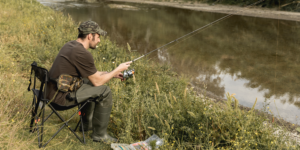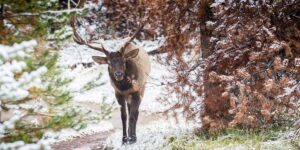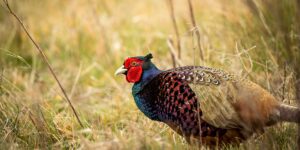When you think of big game hunting, what comes to mind? For some, it might be the thrill of the hunt. For others, it might be the excitement of bagging a trophy animal. Whatever your reasons for hunting big game, one thing is for sure: There’s nothing quite like it. In this post, we’ll take a look at some of the most popular big game animals to hunt and discuss access issues related to each. So whether you’re a seasoned pro or just getting started in the sport, read on for some valuable information.
Why limit yourself to public land when there are millions of acres of private land to explore.
What is Considered Big Game?
There are 29 species of big-game recognized by the Grand Slam/Orvis Club, and while other species of game exist is the U.S., many are labeled as exotic species and aren’t recognized as North American big game. The Grand Slam/Orvis Club was founded in 1956 by Bob Housholder — his goal to document hunters who successfully harvest all North American animals recognized by the Boone & Crockett Club.
Requirements for Big Game Hunting
While requirements to hunt big-game legally vary by state, hunters will need to be Hunter Education certified in at least one state, usually their state of residency, and in some cases need additional certifications. Bowhunting for big game is becoming increasingly popular and some states do require a Bowhunting Ed course.
Once certified to hunt big game via Hunter/Bowhunter Ed, hunters will need to purchase a license for each specific species. For example, hunters in Colorado planning to hunt pronghorn, elk, and mule deer will need a separate permit for each, and these permits don’t carry over to other states. In addition, many states don’t offer permits on an unlimited basis. Often, especially in western states, big game hunters will need to apply for permits during a draw process. Applicants that are unsuccessful in this draw typically accumulate points, so their chances of drawing and hunting big game the following year improve.
Types of Big Game
To help you spot big game while you’re out, we’ve complied this list of all the different types and particular species within each.
Deer
Whitetail deer
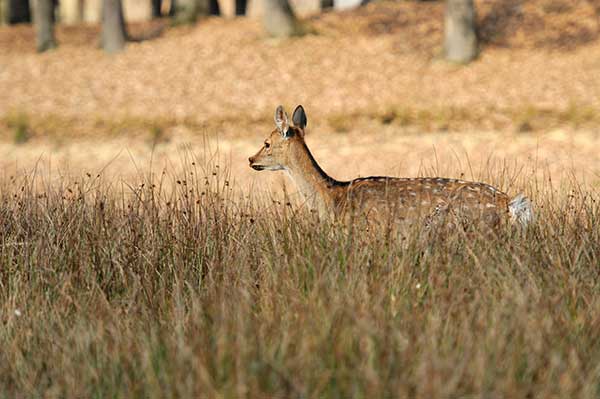
The most sought after animal in North America by big game hunters, the whitetail deer can be hunted in virtually every state in the lower 48, and this big game species is plentiful in several Canadian provinces. Depending on available nutrition, it’s not uncommon for a mature buck to weigh over 250 pounds. Big game hunting for white-tailed deer varies by state, but many states, especially those in the Midwest, East, and South, have extended seasons that allow big game hunters to take advantage of early-season (September-October) food patterns, the annual rut (November in most locations), and late-season (December-February) food sources when weakened from the rut bucks and does pound grain fields. Due to their thriving population, whitetail permits in most states aren’t difficult to come, and bag limits can be liberal. Whitetail deer are best known for their adaptability, and mature bucks typically have between four and five points on each antler.
Coues deer
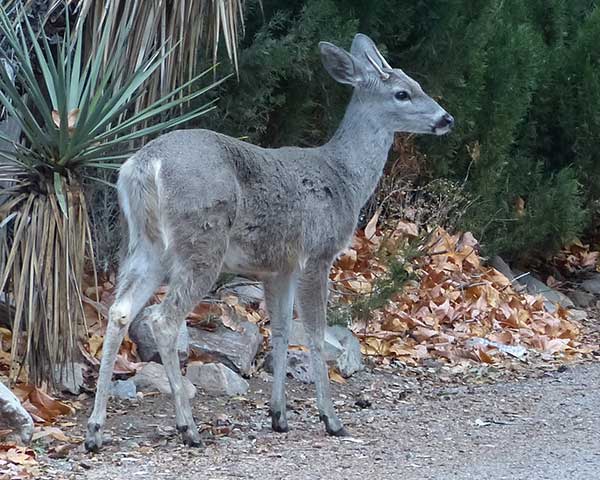
Known as the Gray Ghost, the Couse whitetail is an elfin deer, and these southwest game animals are the smallest subspecies of whitetail deer. A mature Couse will stand 32-34 inches at the shoulder, and rarely tip the scale over the 100-pound mark. Big game hunters are drawn to the Couse like moths to a flame, and most chase them in the southwestern mountain ranges of Arizona and New Mexico. These diminutive deer prefer elevations between 4,000 and 9,000 feet, and typically rut in mid-December. Popular big game hunting methods for Couse deer include using high-powered optics to spot deer from a distance, and then using the broken terrain to move in close.
Mule deer
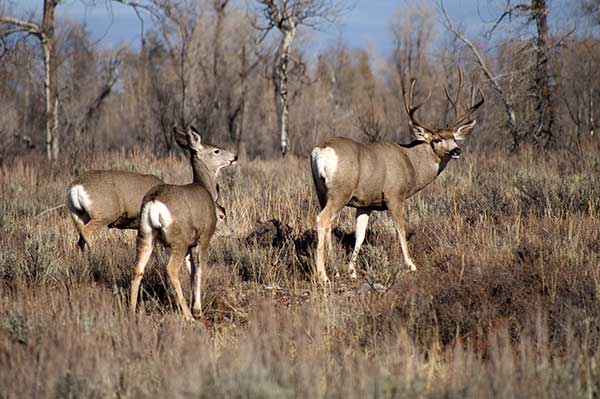
A favorite of many big game hunters, mule deer are an amazing species of deer. Their wide, heavy racks, which can be either typical or non-typical and stocky bodies have established this big game animal in big game hunting lore. Mule deer have large ears, and unlike whitetail deer, have a small white tail with a black tip. A big mule deer buck can weigh over 300 pounds, and these deer are common from the Rockies to the western plains. The annual mule deer rut typically occurs in late November and extends into December.
Columbian blacktail deer
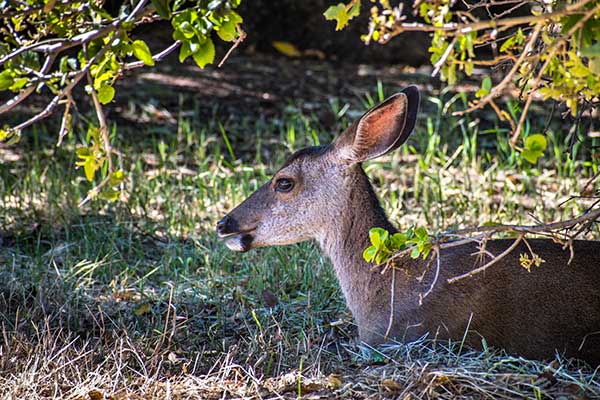
Are members of the mule deer family and are impressively fast. They can cover long distances at a 40 mph pace or sprint up to 60 mph when chased by predators.
Sitka blacktail deer
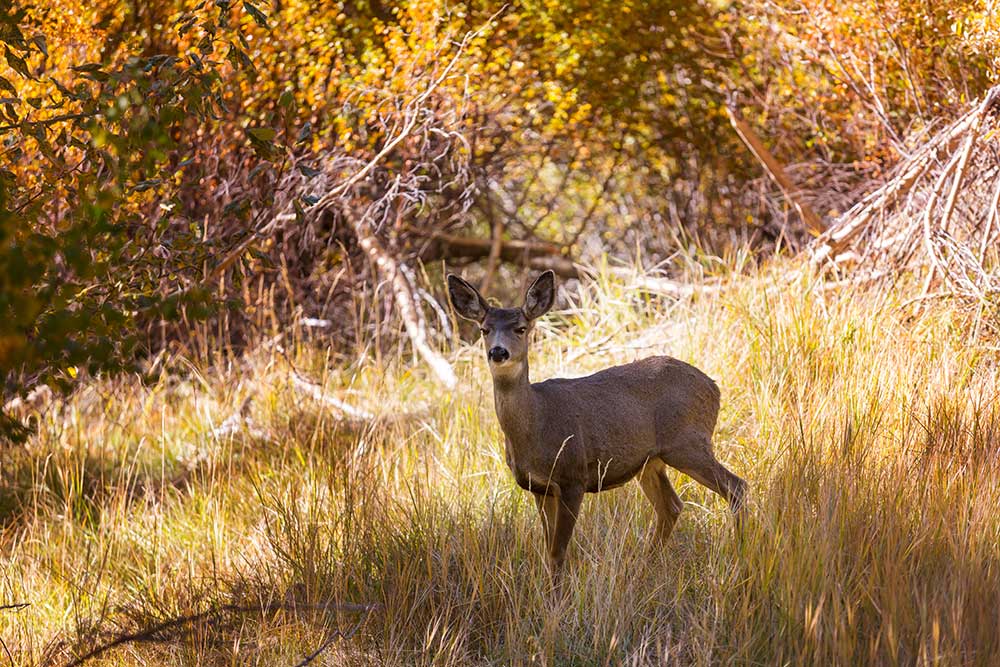
Sitka blacktails are smaller, stockier, and have a more snubbed face than other members of the black-tail group. The average pre-rut weight of a buck is 120 pounds.
The hassle free way to monetize your acreage.
Bears
Black Bear
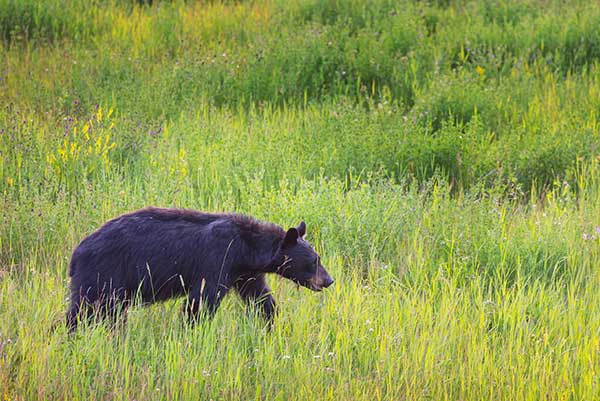
Black bears are the most widely distributed and smallest bear species on the continent. Black bears are common in the United States and Canada, and the annual rut, a time when boars roam in search of a willing mate, occurs in June. Black bears are omnivores, and most state game and fish agencies agree that the general population trend is on the rise.
Alaska Brown Bear
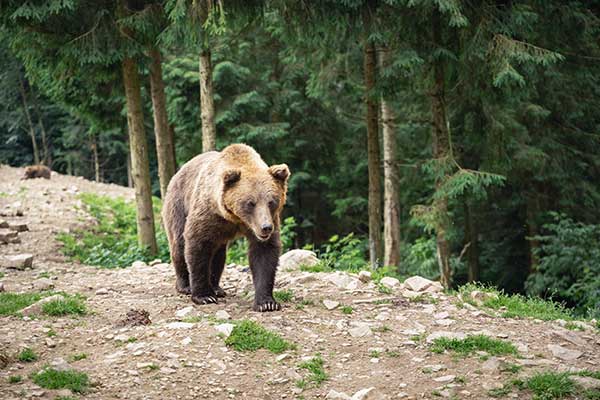
Massive in size, a mature Alaskan brown bear can stand up to 9 feet tall on their hind feet and weigh as much as 1,700 pounds. Their enormous size is directly related to their diet, which in southeast Alaska is a buffet of salmon.
Grizzly Bear
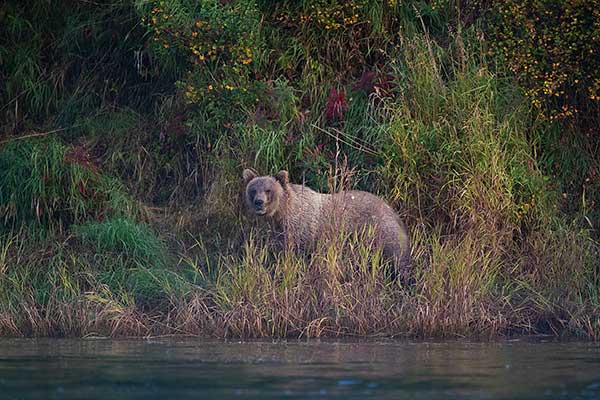
As grizzly populations increase, encounters with humans are on the uptick. Currently, grizzly bears can be found in several Canadian provinces, as well as Montana, Wyoming, and Idaho. Grizzly bears typically weigh between 500 and 600 pounds.
Polar Bears
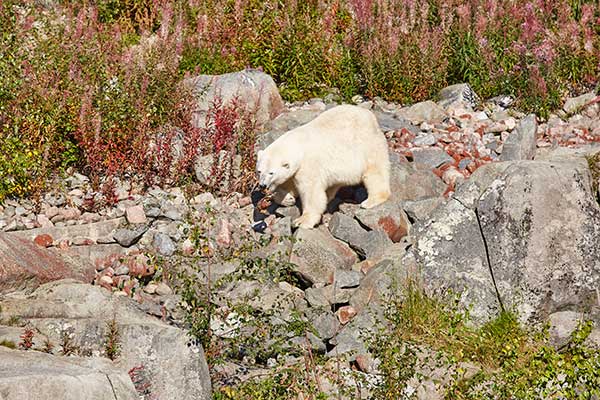
Are the largest land-dwelling carnivore on the planet and are capable of swimming for hours in cold waters. The record identified is of a polar bear swimming for 232 continuous hours.
Mountain Lion
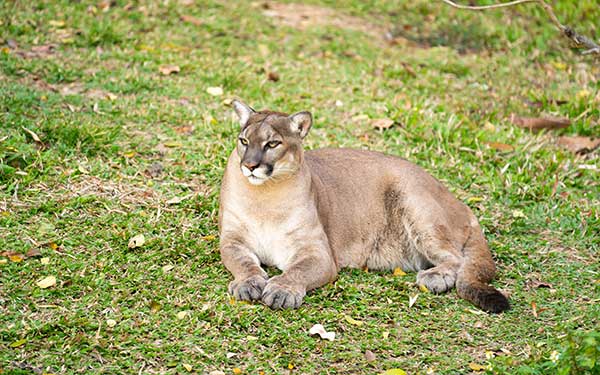
A supreme predator, mountain lions, also called cougars, are thought to kill one deer per week. The mountain lion is an adaptive species, and can be found from the Rocky mountains to the cedar-lined canyons of the West.
Elk
Roosevelt elk
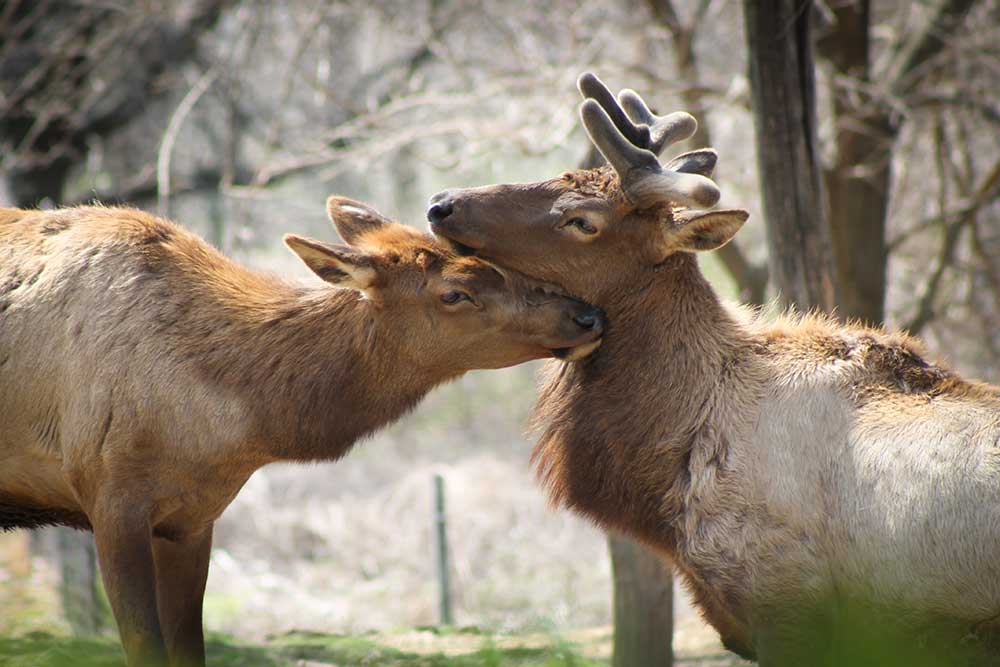
The Roosevelt is the largest member of the elk subspecies. The elk is named for Theodore Roosevelt, and mature bulls can weigh as much as 90 pounds. The most common location to find Roosevelt elk is on the slopes of the Coastal and Cascade mountain ranges. .
American elk
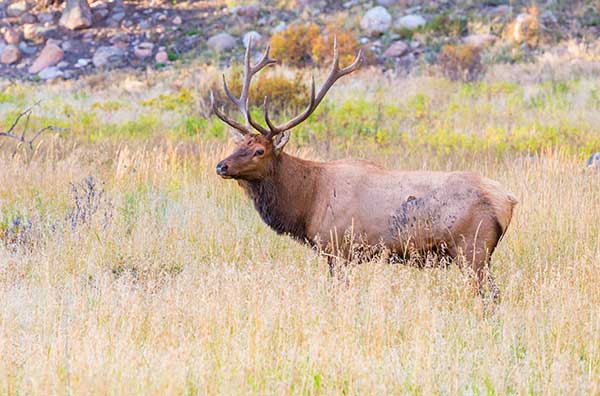
Also called the Rocky Mountain elk, this subspecies is the most populous. Colorado has the largest herd of Rocky Mountain elk at over 300,000 animals.
Tule elk
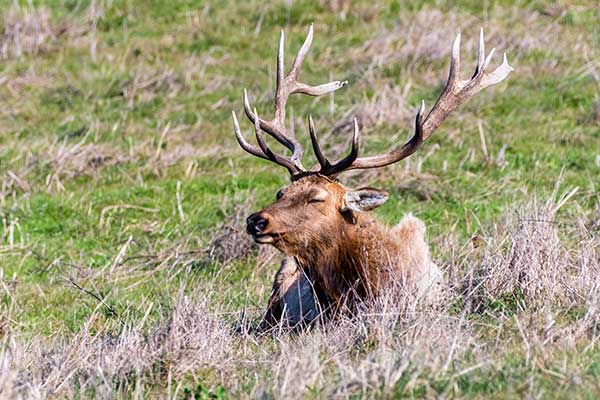
Tule elk can be found in California and are the smallest elk.
Sheep
Bighorn Sheep
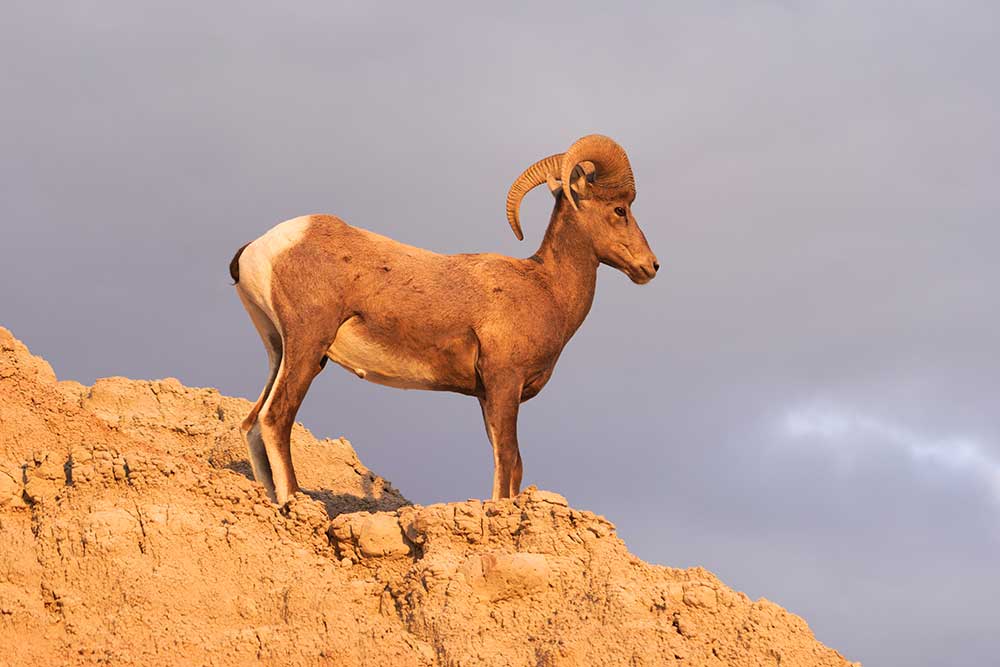
The largest wild sheep in North America, the Rocky Mountain Bighorn is a muscular sheep, and males can weigh over 300 pounds. The annual bighorn rut happens in November, and the sound of heavy horns clashing can be heard throughout the mountains and canyons of the West. Bighorns have wide-set eyes, which increases their angle of vision, and their specialized hooves allow them to traverse the most daunting terrain.
Stone Sheep
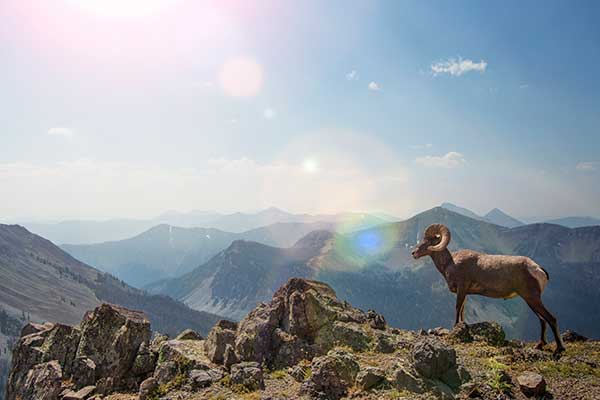
Many consider the bluish/grayish/whitish stone sheep to be the most beautiful of the four subspecies of wild sheep. Stone’s are large, curved horns, and males typically weigh around 220 pounds. Stone sheep have a small range and cona be found in Northern British Columbia north of the Peace River, extending northward into the southern Yukon Territory.
Dall Sheep
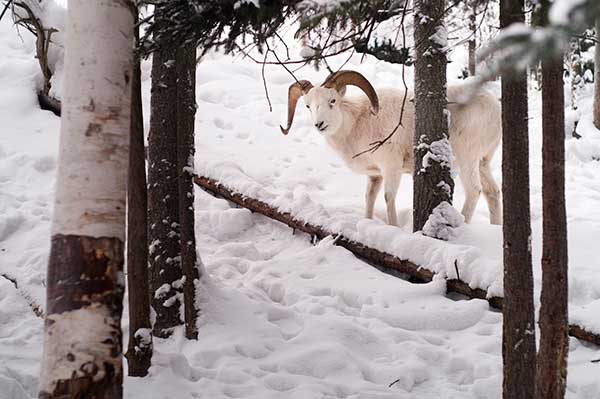
Their off-white color and thick winter coats help them survive the harsh climates of mountain peaks and wind-swept exposed cliffs. They are known for their large, curled horns and headbutting among males.
Desert Bighorn Sheep
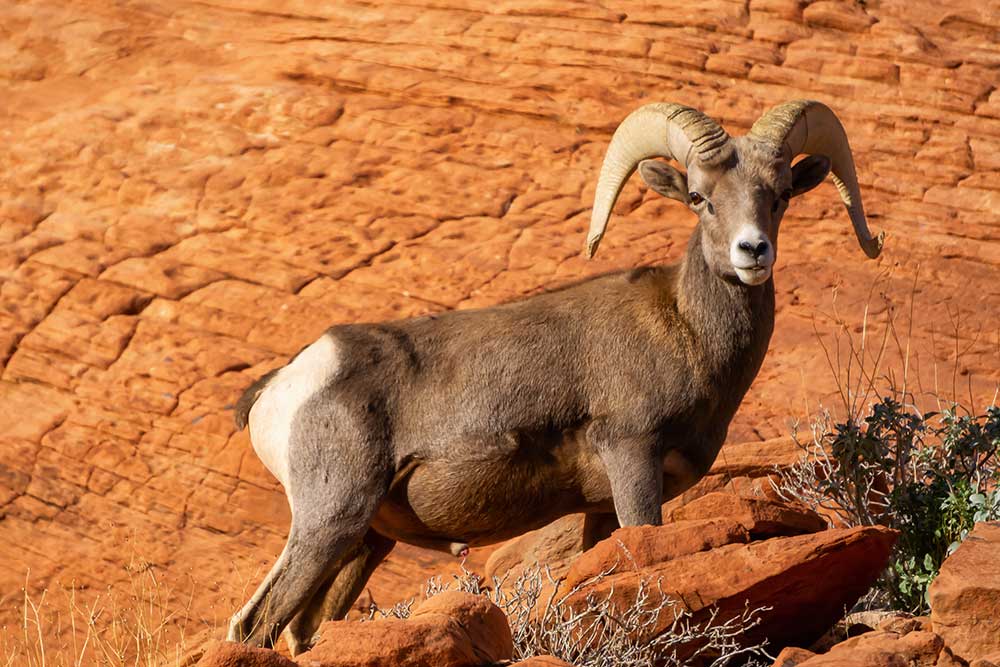
Are stocky and heavy-bodied and also known for the head-to-head combat between males. Their ability to adapt to limited water sources in the desert lets them live up to 15 years in the wild.
Moose
Western Canada Moose
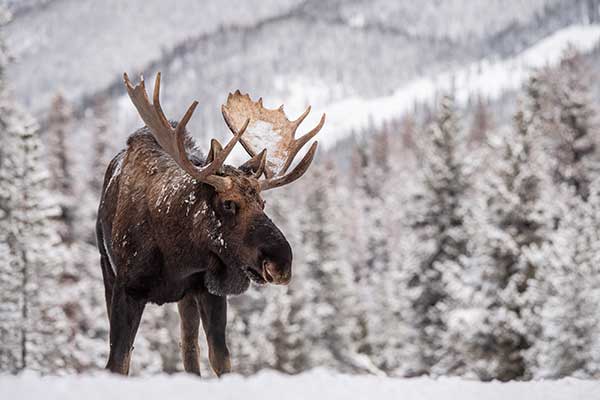
A resident of the boreal forests and mixed deciduous forests in the Canadian Arctic, the Canadian moose is a great traveler and swimmer. Moose love water, and are often found around swamps, lakes, ponds, rivers, and streams. Western moose consume vegetation such as forbs, shoots from willow and birch trees, and numerous aquatic plants. Antler size is significant, but nearly as large as the Yukon moose. Western Canadian moose must consume close to 10,000 calories a day.
Shiras Moose
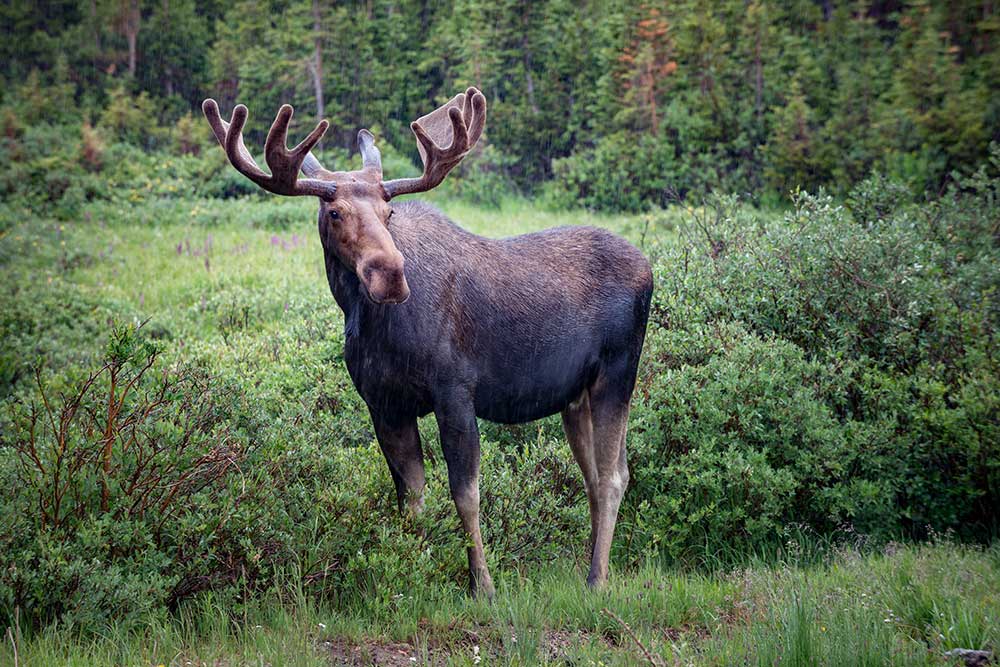
One of the most treasured big game species in the lower 48, Shiras moose thrive in Colorado, Utah, and several other western states. While Shiras are known for their lesser-sized antlers, mature bulls do sport impressive headgear, often as wide as 50 inches, and like all moose, they are massive in size. Shiras moose have adapted to a variety of western habitats.
Alaska Yukon Moose
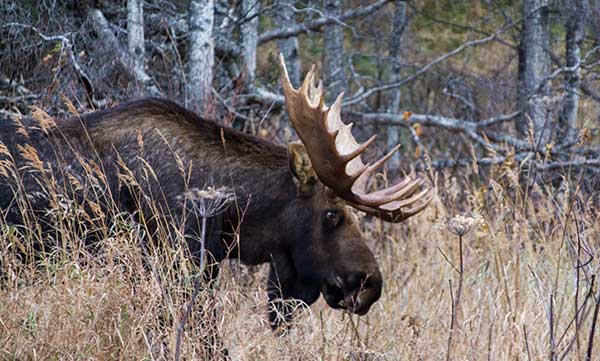
For serious moose fanatics, the Alaska Yukon is the creme de la creme. The Alaskan Yukon moose is the largest of the moose subspecies and can grow up to 6 feet tall and have antlers that are over 65 inches wide.
Caribu
Barren-ground Caribou
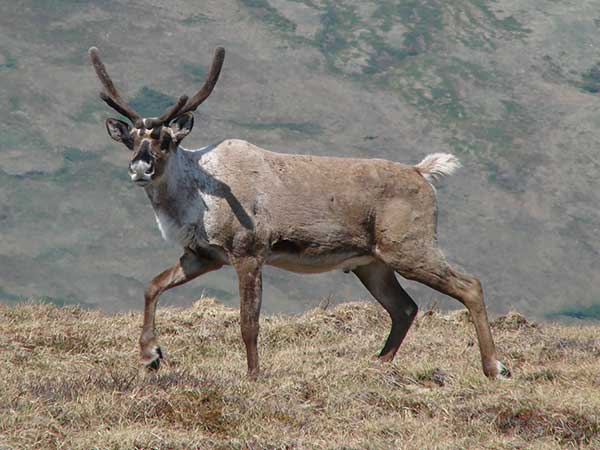
the current population is estimated at around 220,000 animals in the Yukon. Caribou are the only members of the deer family in which the males and females grow antlers; however, the antlers of female caribou are significantly smaller.
Woodland Caribou
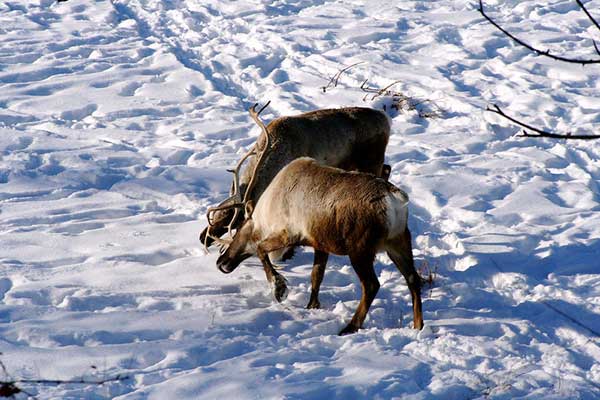
Woodland caribou inhabit boreal forests, and have narrower antlers with shorter points compared to other subspecies. Bulls are commonly referred to as stags.
Mountain Caribou
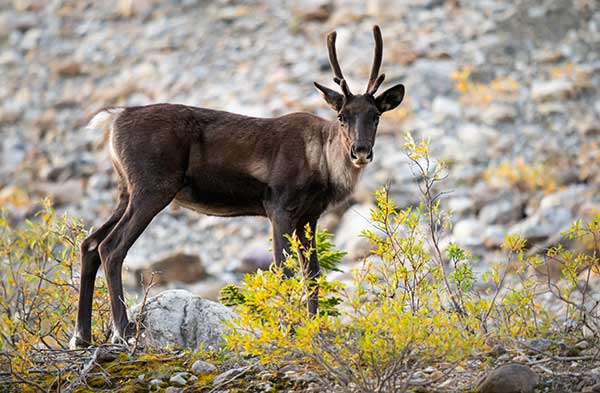
The largest of the caribou subspecies, mountain caribou have heavy muscles, skinny legs, and strong hooves; everything they need to survive in the rough landscapes they inhabit. Scientifically, mountain caribou are woodland caribou. Bulls will weigh up to 600 pounds, and can sport ultra-impressive headgear. mountain caribou are not migratory, and the mountain caribou rut coincides with the moose rut.
Other types of Big Game
Rocky Mountain Goats
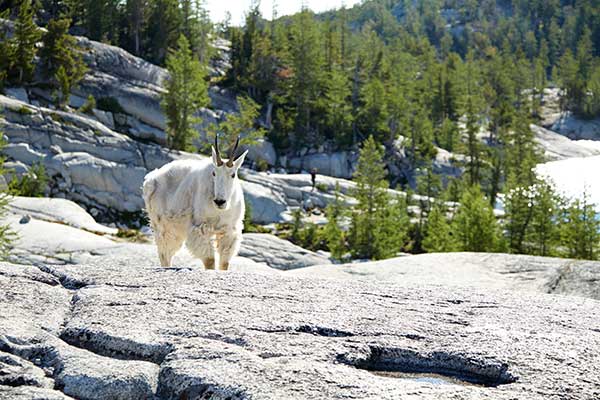
Huntable in many western locales, the mountain goat inhabits some of the most daunting terrain in North America. Mountain goats prefer steep, rocky terrain where predators are reluctant to go. Their diet consists of sedges, forbs, low-growing shrubs, blueberries, hemlock, and lichen, and mature mountain goat, also called a Billy, can weigh as much as 380 pounds. A magnificent species of wildlife mountain goats are sure-footed climbers with cloven hooves with a pair of toes that spread wide to boost their balance on unstable terrain.
Bison
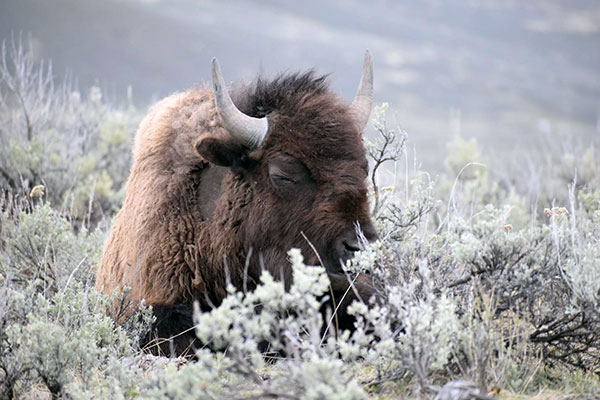
One of the largest big game animals in North America, the bison was hunted to near extinction toward the end of the Civil War. Another conservation success story, today an estimated 500,000 bison live on the continent, and big game hunts for these massive beasts happen each year on public land in Montana, Arizona, Utah, and Alaska. Tags are extremely hard to come by, and some hunters go a lifetime without drawing a permit. The flesh of cows and young bulls is a big reason why many want to hunt for these animals. Bison prefer to graze on grasses, sedges, and forbes.
Pronghorn Antelope
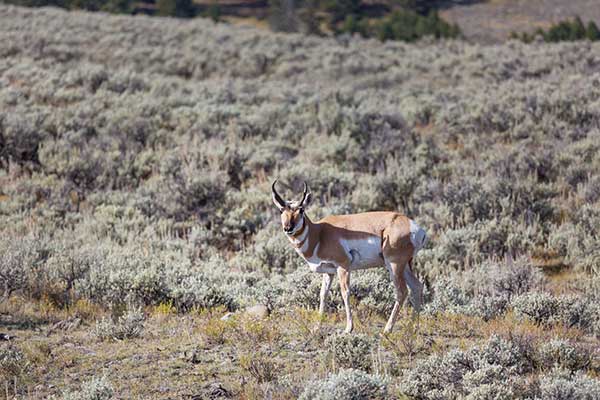
The symbol of the American West, pronghorn are actually not an antelope or a goat, and they are not related to antelopes found in Africa. Rather, they are most closely related to the giraffe. Pronghorn are brilliantly colored, and are quite tawny. These prairie-dwellers are the fastest land animal in North America, and the second fastest in the world, trumped only by the cheetah. A mature male will weigh around 150 pounds, and females will typically weigh less than 100 pounds. Males have a pair of ebony horns, which depending on their age, will be between 10 and 15 inches in length. Females have horns as well, but they are more nubs than horns. Pronghorn prefer grassland landscapes that are open so they can use their binocular-like vision to evade predators. A top-notch big game species, pronghorn are pursued from August through December in many western states. The big game animal is most populous in Wyoming, but states like Colorado, Montana, Idaho, and South Dakota are also popular areas for big game hunters.
Muskox
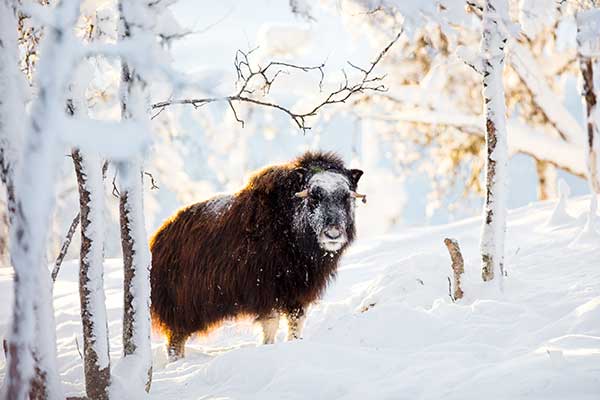
An ancient species of big game, Muskox are herbivores with a lifespan between 12 and 20 years. Thriving in the tundra of the frozen Arctic, top food sources for this 500- to 800-pound animal include roots, mosses, and lichens. Native to Alaska, this game animal is foriegn to most hunters due to the fact that Muskox are found in Alaska, Greenland, and a few Canadian provinces. A conservation success story, Muskox were exterminated in Alaska in the 1920s, but efforts in wildlife conservation have helped this stocky, long-haired animal with a slight shoulder hump thrive.
Wild Boar
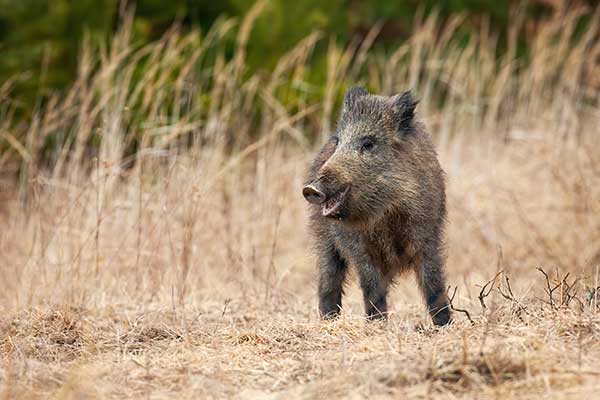
Not recognized as a big game in North America, but rather an invasive feral species, wild swine is a blast to hunt, and because females can reproduce at three months of age and can produce several litters throughout a year. Feral hogs have the highest reproductive rate of any ungulate, and are becoming an agricultural nightmare for many state game and fish agencies, particularly in the South. Conservation, when it comes to feral swine, means mass extermination, and for this reason, there are no bag limits in most hog-rich states when hunting private ground, and licenses, if required, are affordable. Wild hogs range in size and color.
Where to hunt big game
Public land
Land that is open to the public for big game access is dubbed as public land. While public land comes in many forms: state, BLM, national forest, wilderness, walk-in access, to name a few, most hunters pursue their big game hunting goals on open-to-anyone dirt. Many public access areas will have rules, and these rules will need to be researched before planning an archery or rifle hunt. Across the U.S., hunters will find more than 640 million acres of public land. While the western landscape is best known for having copious amounts of public access, state game and fish agencies across the country are working with private landowners to open more ground to the hunting public.
Private land
Private land is land owned by an individual, group of individuals or a corporation. Beside some invasive species, a hunting license is still required to hunt private land. The biggest difference between public land and private land is if the hunter doesn’t own the land, that hunter must obtain permission from the landowner. Every fall, across the United States, game wardens write trespassing tickets to hunters that failed to play by the rules. Getting access to private land for hunting the right way is usually expensive or time consuming, but we’re trying to change that.
Click on one of the map pins below to learn more about each private hunting property.
Click the link below to get signed up as a guest.
Why limit yourself to public land when there are millions of acres of private land to explore.

